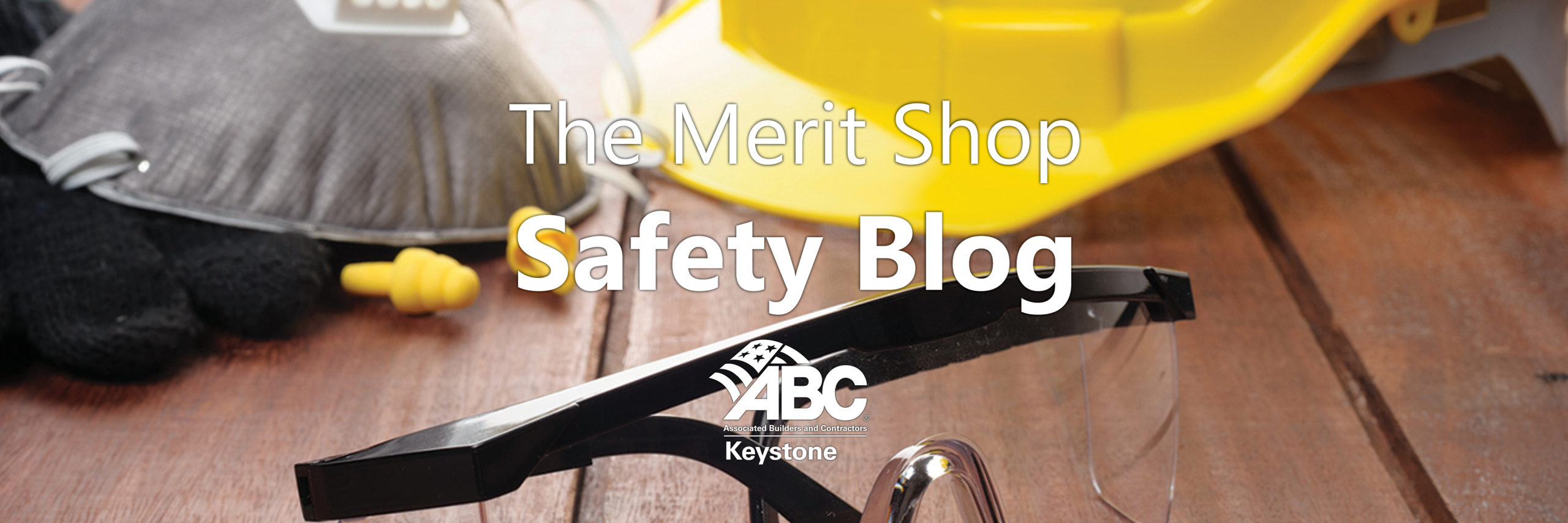BY: KEVIN KEITH, DIRECTOR OF SAFETY SERVICES, ABC KEYSTONE
In the past month, with the return to work for many PA construction companies and workers, the requirement to wear face coverings while at the jobsite has sparked numerous worker complaints. The common complaints have been about worries of heat stress and medical conditions that free the worker from wearing the face covering. Ultimately, contractors are finding it more and more difficult to reach compliance. In this article, I would like to explore two of these common complaints and clear up the myths.
Heat stress and the use of face coverings has become a larger issue now that our temperatures are approaching summer-like heat. While this argument seems logical, we first must think about how our bodies respond to being exposed to higher temperatures. Our bodies function best at a temperature of 98.6° F. If our core body temperature starts to rise above the optimal temperature level, our bodies respond to regulate the temperature back to the optimal level. The hairs on our skin will typically relax, which allows for heat to be released. This relaxing of the hairs also stimulates our sweat glands to release sweat which ultimately causes surface cooling through evaporation.
Humans have many sweat glands to allow for this type of cooling. Contrasting this human response, dogs and cats have sweat glands but not in the numbers that humans do. Dogs and cats have most of their sweat glands in their paws but not enough to allow for effective cooling. They cool down through panting. In other words, they cool down through respiration, and humans cool down through sweating. Linking this all together, humans are one of the few species that cool by sweating (monkeys, apes and horses are the others). It is a much more efficient way to cool than through mouth breathing.
Wearing a face covering does not necessarily cause an increase in core body temperature. Instead, it decreases comfort due to perceived temperature change in the numerous thermoreceptors located at the nose and mouth, giving us the sensation that we are hotter than we really are.
A review of scientific studies published by Oxford University Press found that the psychological impact of wearing a protective face mask in higher temperatures led many users to believe that they were hotter, and in fact, showed in many cases there was no change in core body temperature when wearing the mask. A sense of being uncomfortable was more the driving force.
So, with no scientific proof of increased risk of heat stress while wearing a mask, we must default to the fact that personal protective equipment is uncomfortable. Its effectiveness relies heavily on the user’s ability to wear it as instructed. This argument would be like a worker complaining that wearing shoes and socks when it is hot will lead to heat stress because their feet are hot.
The second issue with the face coverings is that the user can report a medical condition exists that does not allow for them to wear the face covering. This very well may be true, but as an employer you do have the right to know of this physical limitation so that reasonable accommodations can be made to protect the worker. It is absolutely within the right of the employer to request a medical note stating that the worker is not capable of wearing the face covering and detailing the limitations. Once this information is provided, the employer can then try to make reasonable accommodations, such as offering the worker a face shield to be worn.
Face shields have been found, if worn correctly and providing good overall coverage, to be more effective than face coverings in providing protection. Another example of accommodation would be, if available, the worker could be isolated from other workers and perform work tasks alone. This may not be possible, and if that is the case, it could be possible that accommodations cannot be made for the worker. If this is true, document your accommodation attempts and notify the employee that work is available for them, but you are unable to accommodate their restrictions. Always consult your legal advisor when it comes to these types of discussions and decisions. It is in your best interest to ensure no legal action can be taken against you.
COVID-19 has put us all in a place of uncertainty and challenge. We have all become weary of its impacts on our daily lives. We all just want to go back to “normal.” Unfortunately, nothing has been done to address the virus. We have no treatment, and there is no approved vaccination. This new normal will be here for some time to come, and we all just must work through this together.
Many do not believe that the virus is real or a major threat. This article is not meant to challenge those beliefs, but simply to provide some guidance in addressing common issues that have been shared. If you have any additional questions related to the COVID-19 virus and the impacts in construction, ABC Keystone offers guidance and can assist your company in accessing the latest information. Visit the coronavirus section of our website and look for updates. Frequent updates are posted along with links to provide the best assistance available. If you are still looking for guidance, please feel free to contact Kevin Keith, Director of Safety Services, to discuss your concerns or issues: kevin@abckeystone.org
Posted July 9, 2020


